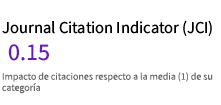Not To Be «Looked At»! Reality and Unreality in Kantor’s Aesthetics of Theatre.
DOI:
https://doi.org/10.24310/BoLArte.2016.v0i37.3291Abstract
Universally regarded as one of the twentieth century’s most subversive pièces, the Dead Class epitomises Tadeusz Kantor’s concept of what theatre (and, more generally, art) could and should be. In the attempt to eliminate any distance between the stage and the auditorium, between actors and spectators, the Polish artist reflected on how to do away with the traditional distinction between the reality of everyday life and the (alleged) unreality of theatrical performances. Staging daily and trivial objects played a crucial role in this artistic strategy. Kantor was fascinated, in particular, by hyperrealistic dummies which seem to have more to do with Wunderkammern and fairground booths than with so-called «high» art. By focusing on the material the Dead Class mannequins are made of (namely, wax), the article delves deep into Kantor’s essays and manifestos, exploring the theoretical reasons underlying his aesthetics of theatre.Downloads
Metrics
Downloads
Published
How to Cite
Issue
Section
License
Todos los contenidos publicados en la revista Boletín de Arte están sujetos a la licencia Creative Commons Reconocimento-NoComercia-Compartirigual 4.0 cuyo texto completo puede consultar en <http://creativecommons.org/licenses/by-nc-sa/4.0>

Los/as autores/as cuyas contribuciones sean aceptadas para su publicación en esta revista conservarán el derecho no exclusivo de utilizar sus contribuciones con fines académicos, de investigación y educativos, incluyendo el auto-archivo o depósito en repositorios de acceso abierto de cualquier tipo.
La edición electrónica de esta revista esta editada por la Editorial de la Universidad de Málaga (UmaEditorial), siendo necesario citar la procedencia en cualquier reproducción parcial o total.











4.png)
